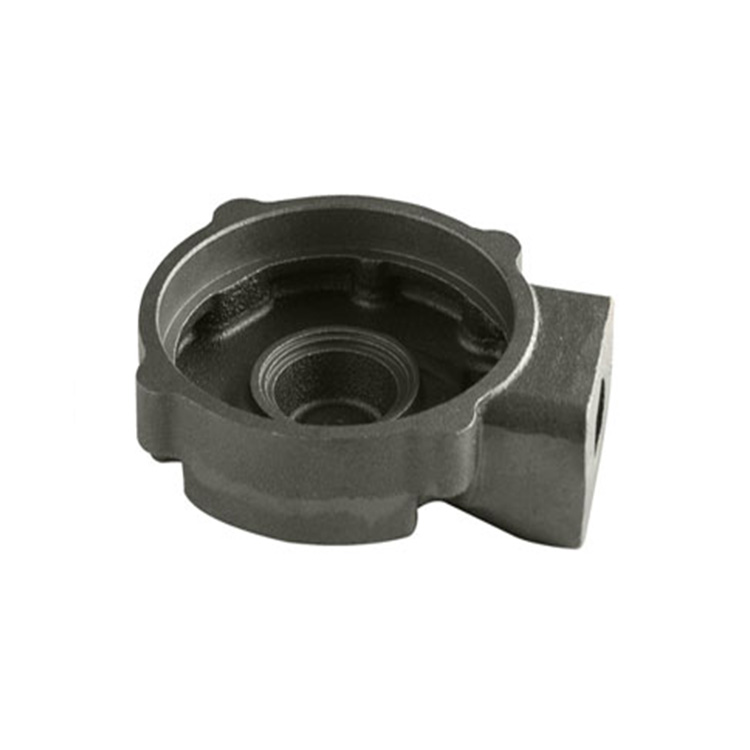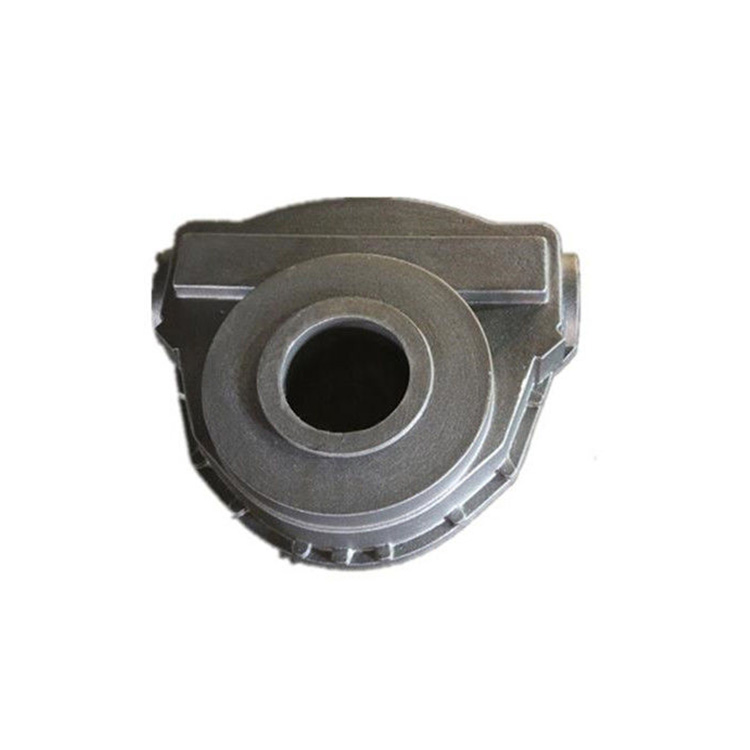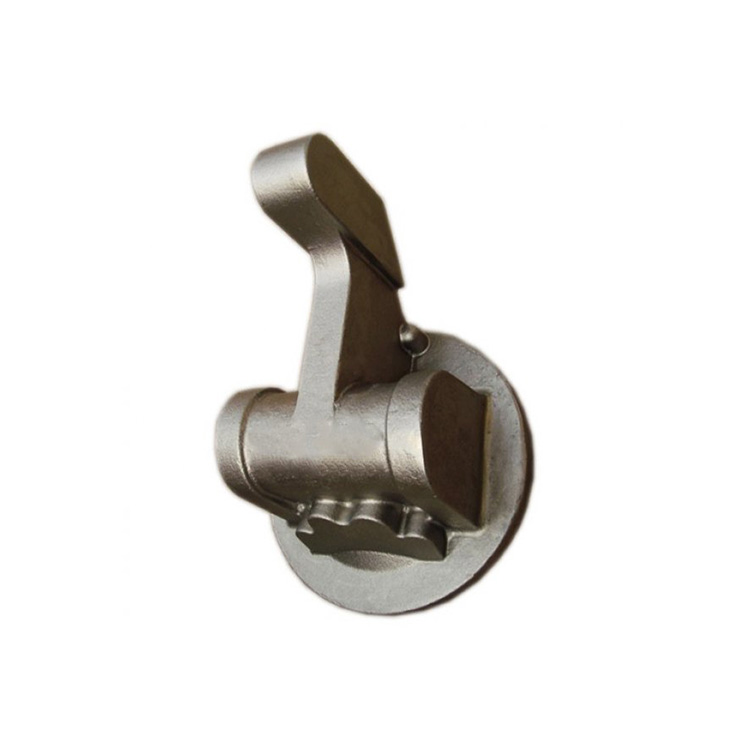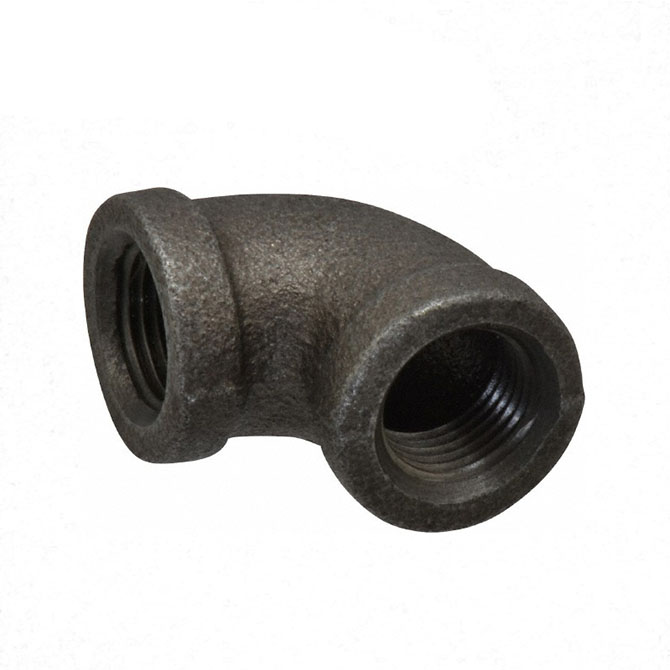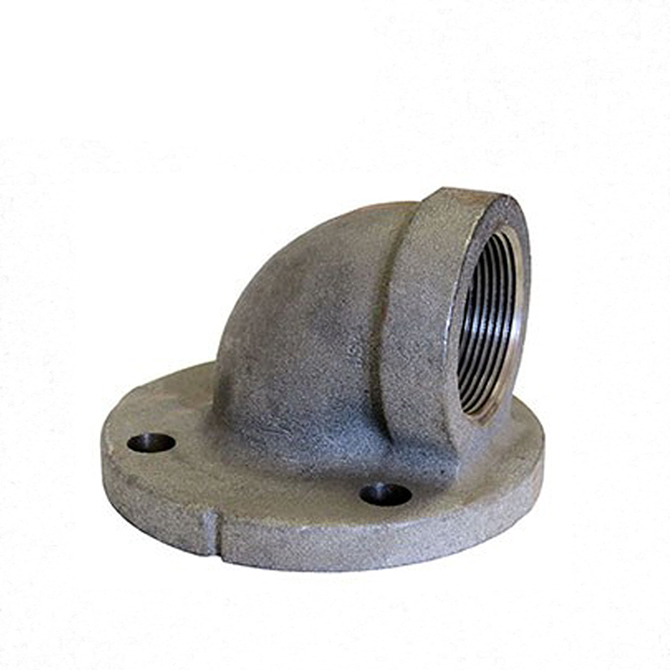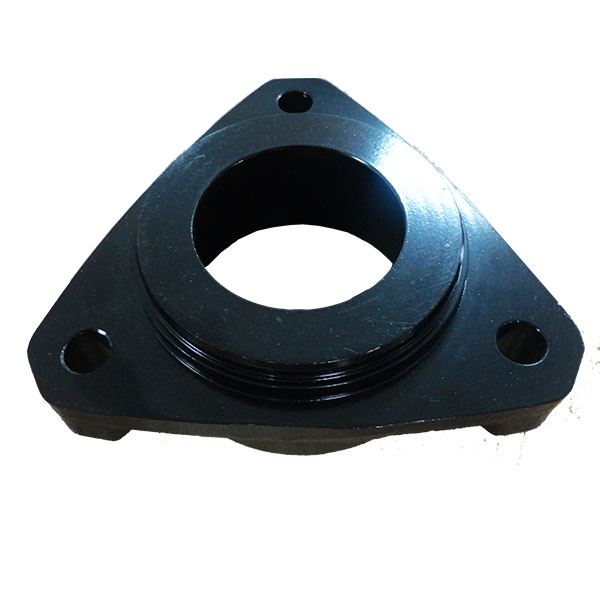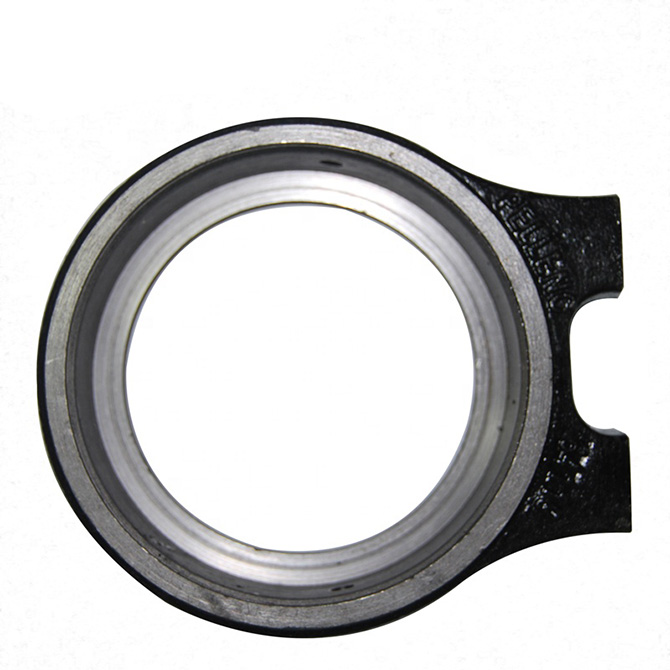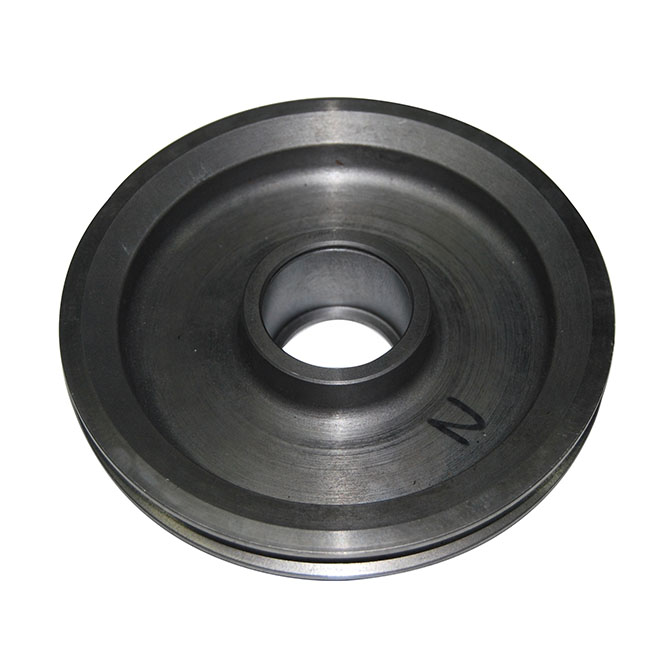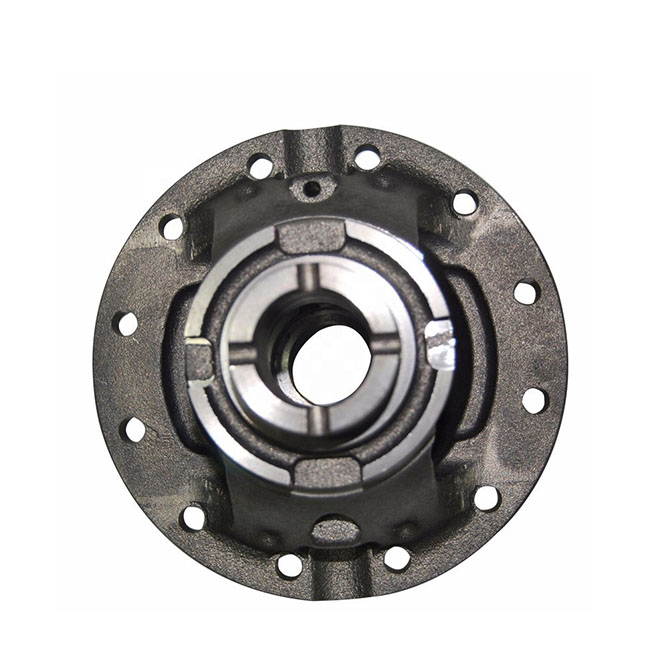ABOUT Gray Cast Iron
Gray cast iron is a mixture of iron, carbon, and silicon. The gray part in the name also spelled “grey,” describes the color of the alloy along with the graphite fractures that appear due to graphite flake structures inside the iron.
Naturally, the materials used in gray iron, i.e. the ratios of the elements put in the mix, along with the ensuing cooling process dictate how much graphite ends up in the gray iron as well as the properties of the iron itself.
For instance, increasing the percentage of silicon tends to help stabilize the graphite within the alloy, whereas decreasing the cooling time may reduce the amount of graphite in the finished product.
These differences can result in gray iron that is hard or soft, depending on the occasion it is made for. Furthermore, you can add more elements to this alloy or introduce other processes, including heat treating and annealing, in order to manipulate its final properties.
Back then, gray iron was used in the manufacturing of weaponry, household items, and everyday tools. It wasn’t until the mid-fifteenth century A.D. that the practice caught on in the west, particularly in England.
Properties of Gray Iron
On average, Gray iron castings are composed of 2.5 – 4% of carbon, 1 – 3% of silicon, and about 95% iron. The graphite that appears in the iron can take up to 6 – 10% of the total volume of the resulting iron casting.
Despite taking up considerable space, the graphite flakes don’t contribute any strength to the alloy; hence, they act similar to voids.
On the one hand, the extremities of these flakes become hotspots for stress concentration, turning the gray iron brittle when it comes to tensile strength. Consequently, these very same graphite flakes help the alloy absorb vibrations.
As mentioned earlier, manipulating either the materials used in the mix or the cooling process can affect the final product. A case in point is how moderate cooling can give a type of gray iron that has a pearlitic matrix, yet fast cooling creates gray iron with a ferritic matrix.
Furthermore, decrease the time of cooling enough and you’ll inhibit the formation of the graphite flake structures altogether, giving rise to white cast iron instead, also called cementite.
Advantages of Gray Iron Castings
Seeing as gray iron casting has been around for nearly 3,000 years, it stands to reason that the produced alloy has numerous advantages over other types of iron castings.
To start with, gray iron is cheaper than almost every other type of cast iron. Additionally, with regards to most everyday applications, gray iron has decent ductility, strength (mainly compressive), and resistance to impact.
It is also a good conductor of heat, meaning it can transfer heat easily in addition to distributing it evenly over its surface. Over and above, the presence of graphite flake structures that help dampen vibrations makes gray iron perfect for manufacturing bases for machinery.
Not only does gray iron withstand vibrations, but it also can outlast most other types of cast iron when it comes to thermal cycling, which is the stress that results from a material going through processes of heat and cold. Finally, the graphite structures can act as a lubricant for cuts while breaking up chips, making the gray iron machinable.
Applications for Gray Iron
Owing to its many advantages as well as its cheap cost, gray iron is suited for multiple applications. For example, its strength, particularly compressive, makes it perfect for making weights and counterweights.
However, its main benefit lies in its ability to dampen vibrations plus bear up against thermal cycles: dampening vibrations come in handy when making manholes, gears, and disc brakes and suspension parts for vehicles.
Alternatively, everyday activities such as cooking, driving, and anything else that generates heat requires a material that conducts heat well in addition to tolerating vicious heat cycles. It is for that reason that stoves and car engines are made from gray iron castings.
Ductile Iron Castings
Iron Castings
During the process of casting a metal part, a manufacturer forms a new solid shape by pouring molten metal into a mold and allowing the material to harden while assuming the conformation of the mold cavity.
Three important ferrous castings have gained commercial importance:
- Grey Iron– Steel as a commercial iron contains carbon up to 1.7%. Manufacturers sometimes refer to iron which contains a high percentage of graphite as “grey iron”. This cost-effective material has found wide utility although it does frequently display brittle properties.
- Malleable Iron – Another specialized form of iron received the popular name “malleable iron” due to its property of exceptional softness. First developed hundreds of years ago, it contains significantly less carbon than cast iron. It permits machining readily after casting.
- Ductile Iron – Ductile iron casting produces strong ferrous metal parts which display the ability to withstand collisions well without cracking easily. This malleable material has obtained many uses in the plumbing industry. Ductile iron casting creates pipes of many sizes; some manufacturers cast large pipes for underground use.
Today, manufacturers use many technologies for creating useful iron and ferrous alloy products. Just a few popular commercial processes include die casting, sand casting, centrifugal casting, and investment casting.
About Ductile Iron
Cast iron gained popularity as a construction material during the Industrial Revolution. Yet, this material possesses a brittleness which renders it unsuitable for some building purposes. During the 1940s, researchers reportedly discovered they could enhance cast iron alloys significantly by adding Magnesium as a constituent prior to casting.
This modification changes the composition of cast metal parts on a granular level. It enhances strength and ductility.
Ductile iron, due to its enhanced ability to bend and withstand impacts without breaking, gained popularity soon after its introduction into the commercial marketplace. Today, ductile iron castings still enjoy numerous applications.
They have achieved particular fame in the production of large pipes used by water and wastewater systems. Reportedly, ductile iron has also found applications within the transportation and automotive industries.Properties of Ductile Iron
The addition of Magnesium affects the properties displayed by ductile iron. This material demonstrates improved ductile and tensile strength, properties which contribute to its suitability in underground pipes subjected to repeated stress from shifting layers of earth.
Ductile iron castings display greater strength than gray iron castings, for instance. They absorb impacts by bending, without rupturing readily.
Another property which contributes significantly to the popularity of ductile iron relates to its enhanced ability to resist corrosion compared with iron.
Today, aging underground infrastructures in some urban areas have sustained problems due to the corrosion of heavy, brittle cast iron pipes installed decades ago (before the widespread use of ductile iron). By contrast, ductile iron pipes will withstand corrosion underground well for spans of 150 years, or more.
Advantages of Ductile Iron Castings
Ductile iron castings offer a number of distinct advantages as a commercial product.
This material offers a higher strength to weight ratio than some competing ferrous alloys. Its weight contributes to its popularity because manufacturers can ship it cost-effectively in some circumstances.
Ductile iron castings typically display an excellent surface finish; this material may require minimal finishing following casting.
Since ductile iron withstands impacts well, it permits machining. A ductile iron workpiece can withstand additional post-casting operations, such as drilling, cutting and surface treatments. For example, in the making of an underground pipe from ductile iron, manufacturers frequently apply coatings.
Ductile iron supplies corrosion resistance, allowing it to withstand heavy wear for extended periods of time. It has received favorable comparison by some experts to competing types of the lightweight plastic pipe due to this factor. Buried ductile iron water and wastewater pipes potentially remain functional for many decades.
Ductile iron supplies an excellent casting material. Like many other metals, it will accept fine detail during casting. We can create a wide array of useful products using this metal alloy.
Manufacturers sometimes replace heavy steel forgings and cast carbon steel with ductile iron castings. While the suitability of this material for a specific purpose may depend upon a number of factors, in some situations ductile iron castings provide a cost-effective substitute for other metal alloys.
Ductile iron castings prove highly suitable for many important pipe fitting applications. This consideration has greatly contributed to its popularity within the plumbing industry. For example, pipefitters can use this ductile alloy very effectively during tapping.
Its ability to register reliably on metal detectors also contributes to the popularity of ductile iron cast pipe as a construction material. Its traceability enables workers to easily trace the route of underground ductile iron pipes during water and wastewater systems maintenance or improvement projects. Locating buried pipelines accurately often poses problems but the use of ductile iron cast pipes reduces this concern.
Experience
ABOUT Gray Cast Iron
Gray cast iron is a mixture of iron, carbon, and silicon. The gray part in the name also spelled “grey,” describes the color of the alloy along with the graphite fractures that appear due to graphite flake structures inside the iron.
Naturally, the materials used in gray iron, i.e. the ratios of the elements put in the mix, along with the ensuing cooling process dictate how much graphite ends up in the gray iron as well as the properties of the iron itself.
For instance, increasing the percentage of silicon tends to help stabilize the graphite within the alloy, whereas decreasing the cooling time may reduce the amount of graphite in the finished product.
These differences can result in gray iron that is hard or soft, depending on the occasion it is made for. Furthermore, you can add more elements to this alloy or introduce other processes, including heat treating and annealing, in order to manipulate its final properties.
Back then, gray iron was used in the manufacturing of weaponry, household items, and everyday tools. It wasn’t until the mid-fifteenth century A.D. that the practice caught on in the west, particularly in England.
Properties of Gray Iron
On average, Gray iron castings are composed of 2.5 – 4% of carbon, 1 – 3% of silicon, and about 95% iron. The graphite that appears in the iron can take up to 6 – 10% of the total volume of the resulting iron casting.
Despite taking up considerable space, the graphite flakes don’t contribute any strength to the alloy; hence, they act similar to voids.
On the one hand, the extremities of these flakes become hotspots for stress concentration, turning the gray iron brittle when it comes to tensile strength. Consequently, these very same graphite flakes help the alloy absorb vibrations.
As mentioned earlier, manipulating either the materials used in the mix or the cooling process can affect the final product. A case in point is how moderate cooling can give a type of gray iron that has a pearlitic matrix, yet fast cooling creates gray iron with a ferritic matrix.
Furthermore, decrease the time of cooling enough and you’ll inhibit the formation of the graphite flake structures altogether, giving rise to white cast iron instead, also called cementite.
Advantages of Gray Iron Castings
Seeing as gray iron casting has been around for nearly 3,000 years, it stands to reason that the produced alloy has numerous advantages over other types of iron castings.
To start with, gray iron is cheaper than almost every other type of cast iron. Additionally, with regards to most everyday applications, gray iron has decent ductility, strength (mainly compressive), and resistance to impact.
It is also a good conductor of heat, meaning it can transfer heat easily in addition to distributing it evenly over its surface. Over and above, the presence of graphite flake structures that help dampen vibrations makes gray iron perfect for manufacturing bases for machinery.
Not only does gray iron withstand vibrations, but it also can outlast most other types of cast iron when it comes to thermal cycling, which is the stress that results from a material going through processes of heat and cold. Finally, the graphite structures can act as a lubricant for cuts while breaking up chips, making the gray iron machinable.
Applications for Gray Iron
Owing to its many advantages as well as its cheap cost, gray iron is suited for multiple applications. For example, its strength, particularly compressive, makes it perfect for making weights and counterweights.
However, its main benefit lies in its ability to dampen vibrations plus bear up against thermal cycles: dampening vibrations come in handy when making manholes, gears, and disc brakes and suspension parts for vehicles.
Alternatively, everyday activities such as cooking, driving, and anything else that generates heat requires a material that conducts heat well in addition to tolerating vicious heat cycles. It is for that reason that stoves and car engines are made from gray iron castings.
Ductile Iron Castings
Iron Castings
During the process of casting a metal part, a manufacturer forms a new solid shape by pouring molten metal into a mold and allowing the material to harden while assuming the conformation of the mold cavity.
Three important ferrous castings have gained commercial importance:
- Grey Iron– Steel as a commercial iron contains carbon up to 1.7%. Manufacturers sometimes refer to iron which contains a high percentage of graphite as “grey iron”. This cost-effective material has found wide utility although it does frequently display brittle properties.
- Malleable Iron – Another specialized form of iron received the popular name “malleable iron” due to its property of exceptional softness. First developed hundreds of years ago, it contains significantly less carbon than cast iron. It permits machining readily after casting.
- Ductile Iron – Ductile iron casting produces strong ferrous metal parts which display the ability to withstand collisions well without cracking easily. This malleable material has obtained many uses in the plumbing industry. Ductile iron casting creates pipes of many sizes; some manufacturers cast large pipes for underground use.
Today, manufacturers use many technologies for creating useful iron and ferrous alloy products. Just a few popular commercial processes include die casting, sand casting, centrifugal casting, and investment casting.
About Ductile Iron
Cast iron gained popularity as a construction material during the Industrial Revolution. Yet, this material possesses a brittleness which renders it unsuitable for some building purposes. During the 1940s, researchers reportedly discovered they could enhance cast iron alloys significantly by adding Magnesium as a constituent prior to casting.
This modification changes the composition of cast metal parts on a granular level. It enhances strength and ductility.
Ductile iron, due to its enhanced ability to bend and withstand impacts without breaking, gained popularity soon after its introduction into the commercial marketplace. Today, ductile iron castings still enjoy numerous applications.
They have achieved particular fame in the production of large pipes used by water and wastewater systems. Reportedly, ductile iron has also found applications within the transportation and automotive industries.Properties of Ductile Iron
The addition of Magnesium affects the properties displayed by ductile iron. This material demonstrates improved ductile and tensile strength, properties which contribute to its suitability in underground pipes subjected to repeated stress from shifting layers of earth.
Ductile iron castings display greater strength than gray iron castings, for instance. They absorb impacts by bending, without rupturing readily.
Another property which contributes significantly to the popularity of ductile iron relates to its enhanced ability to resist corrosion compared with iron.
Today, aging underground infrastructures in some urban areas have sustained problems due to the corrosion of heavy, brittle cast iron pipes installed decades ago (before the widespread use of ductile iron). By contrast, ductile iron pipes will withstand corrosion underground well for spans of 150 years, or more.
Advantages of Ductile Iron Castings
Ductile iron castings offer a number of distinct advantages as a commercial product.
This material offers a higher strength to weight ratio than some competing ferrous alloys. Its weight contributes to its popularity because manufacturers can ship it cost-effectively in some circumstances.
Ductile iron castings typically display an excellent surface finish; this material may require minimal finishing following casting.
Since ductile iron withstands impacts well, it permits machining. A ductile iron workpiece can withstand additional post-casting operations, such as drilling, cutting and surface treatments. For example, in the making of an underground pipe from ductile iron, manufacturers frequently apply coatings.
Ductile iron supplies corrosion resistance, allowing it to withstand heavy wear for extended periods of time. It has received favorable comparison by some experts to competing types of the lightweight plastic pipe due to this factor. Buried ductile iron water and wastewater pipes potentially remain functional for many decades.
Ductile iron supplies an excellent casting material. Like many other metals, it will accept fine detail during casting. We can create a wide array of useful products using this metal alloy.
Manufacturers sometimes replace heavy steel forgings and cast carbon steel with ductile iron castings. While the suitability of this material for a specific purpose may depend upon a number of factors, in some situations ductile iron castings provide a cost-effective substitute for other metal alloys.
Ductile iron castings prove highly suitable for many important pipe fitting applications. This consideration has greatly contributed to its popularity within the plumbing industry. For example, pipefitters can use this ductile alloy very effectively during tapping.
Its ability to register reliably on metal detectors also contributes to the popularity of ductile iron cast pipe as a construction material. Its traceability enables workers to easily trace the route of underground ductile iron pipes during water and wastewater systems maintenance or improvement projects. Locating buried pipelines accurately often poses problems but the use of ductile iron cast pipes reduces this concern.

